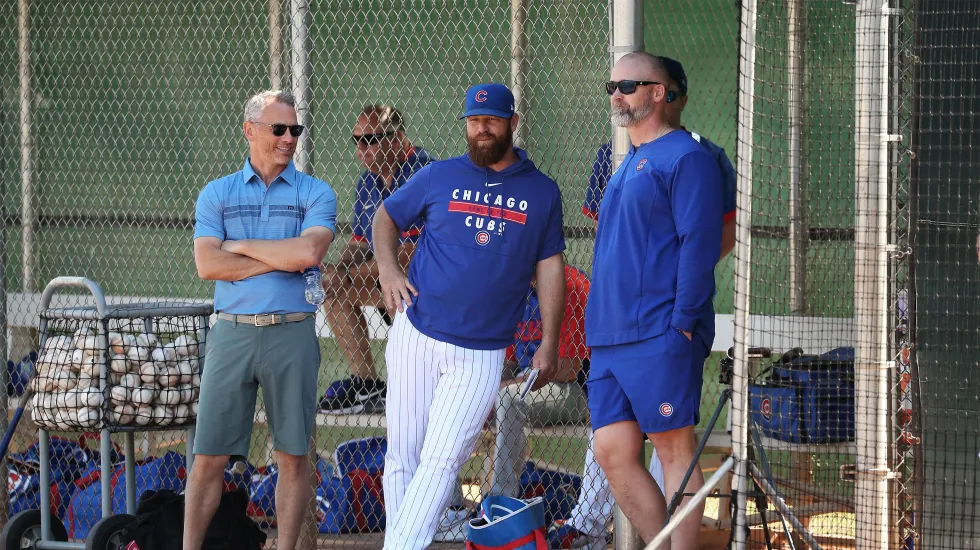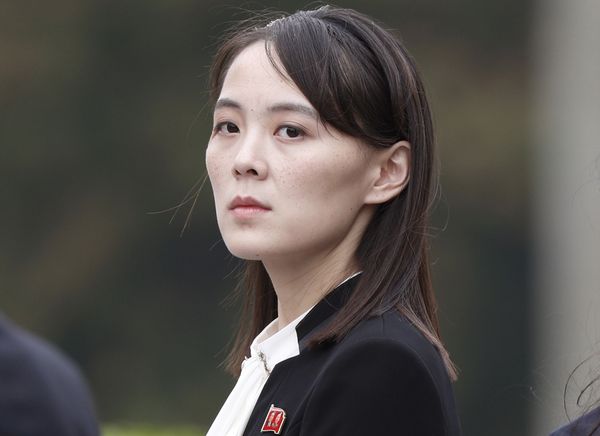
MESA, Ariz. — Building a roster is never simple. But this offseason was more complicated than most.
“I think a lot of the things we set out to accomplish, we did,” Cubs president of baseball operations Jed Hoyer said. “We want to field a competitive team. We also very much have one eye on the future, as we’ve shown. Trying to thread that needle is something that we’re aware of, and I think we did that. I think it’s going to be hard to evaluate anything for a while.”
With the Cubs’ season opening Thursday against the Brewers, however, this past offseason is going to determine what kind of start the team gets off to. As was clear last year, the first few months of the season can determine the direction of the club for the rest of the year.
It may still be unclear which relievers will emerge as difference-makers, how the rotation will shake out and how much infield depth the Cubs actually have. But in a chaotic transaction window that overlapped with spring training, the Cubs at least revealed their priorities.
Let’s start with what they accomplished.
Before the lockout, the Cubs filled a couple of their most glaring holes left over from last season. Marcus Stroman and Wade Miley’s additions gave the rotation a veteran boost — although Miley’s influence won’t be apparent until after he comes back from left elbow inflammation. Yan Gomes’ signing gave them a reliable backup catcher after going through eight backup catchers last season.
After the lockout, the Cubs won the Seiya Suzuki sweepstakes, signing the Japanese star to a five-year, $85 million deal. In an offseason when Hoyer preached “spending intelligently,” Suzuki’s contract and posting fee of about $14.6 million marked the Cubs’ largest financial commitment. And the long-term deal made it clear that the Cubs want the power-hitting outfielder around for their next championship window.
The Cubs tried to add middle-infield depth, but shortstop Andrelton Simmons (shoulder soreness) will likely start the season on the injured list. He said he’d felt a little discomfort in the offseason that subsided, but in camp his shoulder tightness returned.
Jonathan Villar, whom the Cubs also signed this spring, has experience playing third base, second base and shortstop. But until Simmons returns, the Cubs don’t have anyone with the same range at shortstop as Nico Hoerner to help monitor the young infielder’s workload.
Cubs fans seemed to latch onto the idea that Carlos Correa could end up in Chicago in free agency. And while the reports that the Cubs were in contact with Correa’s representation before the lockout were true, the rumor-mill frenzy was stronger than the progression of the talks.
Correa landed with the Twins on a three-year, $105.3 million deal. With opt-outs after the first and second seasons, the contract essentially amounts to a one-year deal with a safety net. For the Cubs, that would have been a large commitment for a contract that didn’t align with their timeline.
The lockout put the Cubs in the biggest bind on the pitching front. It’s common for the club to sign a bunch of hurlers to one-year deals. But this year, restocking the pitching staff during the already condense spring training came with extra injury concern.
Left-handed starter Steven Brault had to join the team on a minor-league deal because a triceps injury cropped up right before his physical. He likely won’t be available for the first couple months of the season.
Right-handed reliever Mychal Givens, who got a late start to camp when he was signed two weeks ago, has been dealing with soreness, according to manager
David Ross. As of Tuesday morning, Ross wouldn’t say if Givens would start the
season on the IL.
Lefty Drew Smyly, who is scheduled to start the fourth game of the opening series, adds another veteran to the mix, but he’ll also have to keep building up to normal starter’s innings in the first couple of weeks of the season.
“I still feel like the early part of the season is going to feel a little bit like spring training,” Hoyer said, “as guys get up to 100 pitches, as guys do back-to-backs, as guys get their timing.”
The Cubs also have yet to pick up extension talks with catcher Willson Contreras, supplying deja vu from last year’s trade deadline selloff. The sides didn’t even agree on a salary figure for this year — Contreras’ last year of arbitration and club control — and are headed for an arbitration hearing.
Overall, the Cubs enter the season with a roster that’s still evolving and battling injuries. They didn’t go all-in like the Rangers, who committed half a billion dollars to two of the top free agents, Cory Seager and Marcus Semien. The Cubs also didn’t continue to tear down like the A’s, whose meager 2022 payroll dipped below $33 million when they traded Sean Manaea this week.
The Cubs’ offseason and spending fell somewhere in between. And in all likelihood, so will their season.







